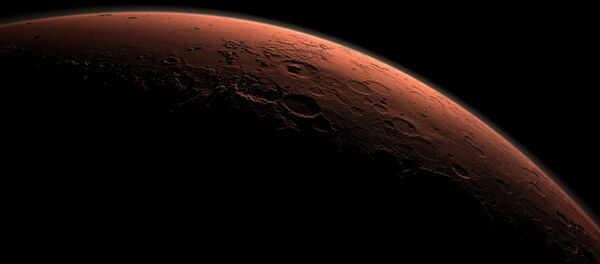NASA plans to launch multiple space missions to Europa, the sixth-closest moon of planet Jupiter, and the sixth-largest moon in the solar system; astrobiologists believe that the natural satellite may host extraterrestrial life.
"You gotta figure, if the first one works, then we're going to go to Europa again," said NASA Administrator Charles Bolden during a media event at Aerojet Rocketdyne, a rocket manufacturing company in Los Angeles.
#NASA's Galileo spacecraft produced this image of reddish bands on #Jupiter’s moon #Europa. pic.twitter.com/HK2Ybx8jsT
— Mike (@MikeTaylor2011) 11 Март 2015
Scientists believe that Europa's ocean may be capable of supporting life, and that is why astrobiologists have long been seeking ways to launch a probe to the icy moon, Space.com elaborated.
Instruments designed to ans. the questions “Is Europa Habitable?” #NASA #Europa pic.twitter.com/BdtmSfu9eS
— Gene J. Mikulka (@genejm29) 26 мая 2015
"We need to do incremental approaches to studying Europa. We're going to fly a Europa mission in the 2020s sometime, and hopefully, what we find will whet our appetite and there will be follow-on Europa missions," Charles Bolden emphasized.
#NASA "#Europa Mission to Probe Magnetic Field and Chemistry" See http://t.co/LV8oSBVoK4 pic.twitter.com/QLjFe1xc7P
— Harold Geller (@AstroBioProf) 27 мая 2015
In the 1990s and early 2000s, NASA'a Galileo mission gathered preliminary information about Europa by conducting about a dozen flybys of the moon.
On May 26, NASA presented the nine "science instruments" that will travel aboard the Europa spaceship, that the agency plans to send to the mysterious moon in the next decade.
QT “@maximaxoo: #Space: #NASA: "What's hidden beneath #Europa's #icy surface?" via @DailyGalaxy pic.twitter.com/f1FwvwPxcW”
— Remember Oneness (@Remember_011235) 8 Март 2015
The equipment includes high-resolution cameras, a ice-penetrating radar array, and a heat detector. During 45 flybys of the Galilean satellite, the probe is expected to reach Jupiter's orbit and collect all the necessary information about Europa's surface.
The landed mission will not be restricted to the moon's surface, according to Jim Green, head of the space agency's Planetary Science division. The researchers are dreaming of collecting samples of the moon's water, sloshing beneath the icy shell.
"We need to really make those steps — methodical steps in scientific understanding — to determine indeed if this body can be penetrated in a way to be able to get under the ice shell. But that's, indeed, in the distant future," Jim Green underscored.




